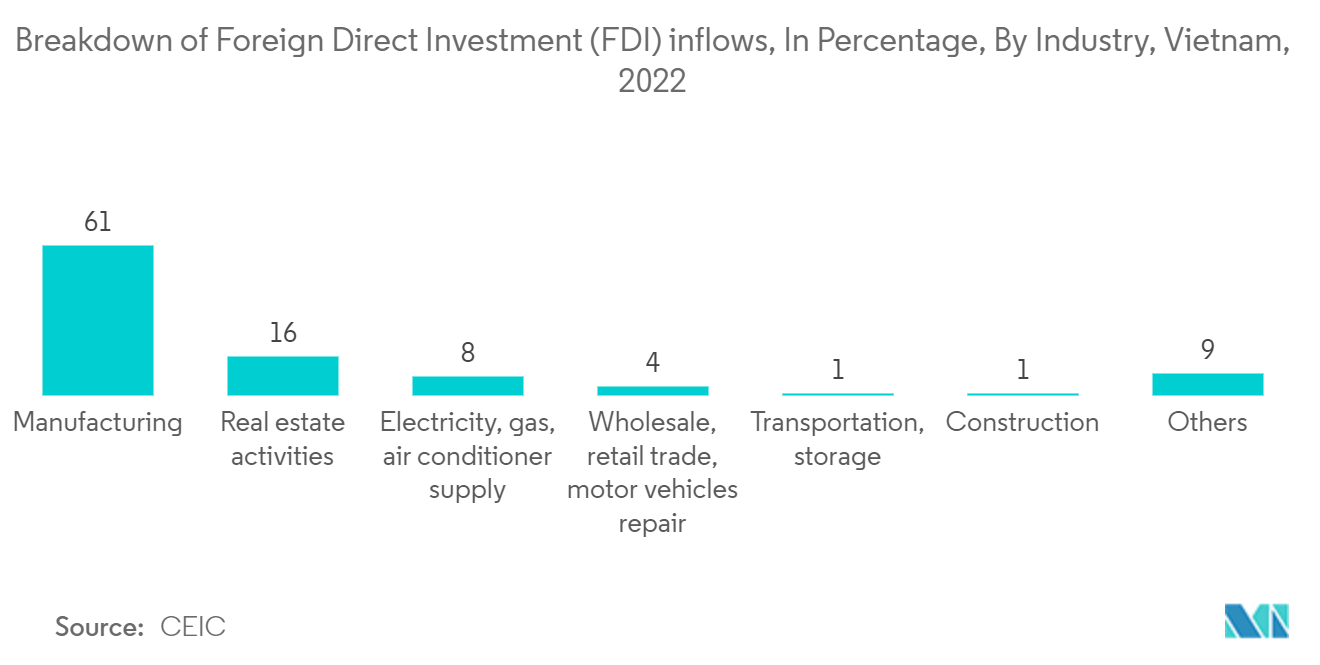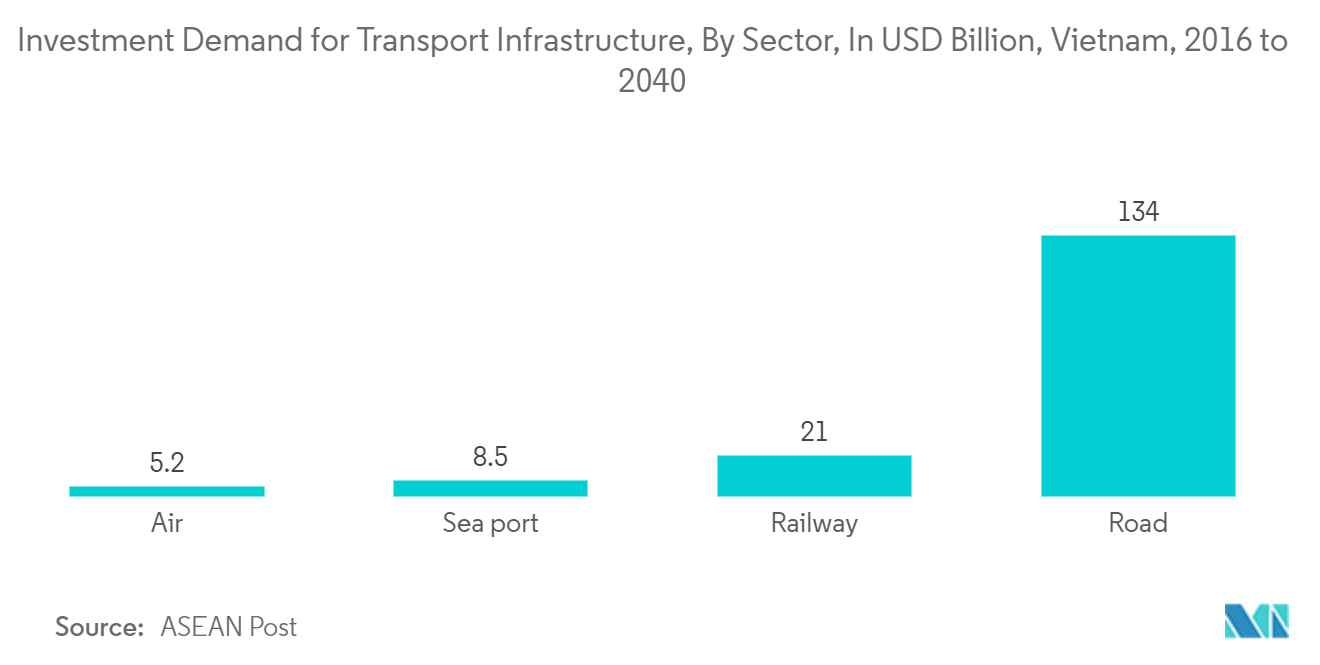Market Trends of Vietnam Infrastructure Sector Industry
Foreign Direct Investment (FDI) Boosting the Vietnam Market
Vietnam is expected to receive 36-38 billion USD in foreign direct investment (FDI) in 2023, according to the Foreign Investment Agency under the Ministry of Planning and Investment (MPI). In 2022, the number reached about 22.4 billion USD. The opening of China's economy may have an impact on Vietnam's foreign investment attractiveness, with China being the area's largest investment destination, so when they open up, money will flow into this market, while capital to Vietnam and other economies in the region will be constrained. On the contrary, the Republic of Korea (RoK), Japan, and Taiwan (China) will increase their investment capital flow. This trend will continue until 2025 when Vietnam will be a preferred investment location for foreign investors.
Currently, the Republic of Korea, Japan, and Taiwan (China) are Vietnam's primary foreign investment sources, and they have steadily grown their investments in Southeast Asian nations. According to the FIA, crucial criteria for FDI to continue to thrive in 2023 are economic growth outcomes in 2022 and government initiatives to improve the business investment environment, build confidence with investors, and successfully use the benefits of free trade agreements. Nguyen Chi Dung, Minister of Planning and Investment, stated that Vietnam has taken a targeted approach to obtaining foreign investment inflows that will help the country achieve its sustainable development policy.

Demand for Road Infrastructure fueling the market
By 2030, the Prime Minister has decided to work for and create a synchronized road network with certain high-quality projects, in order to steadily minimize traffic accidents and pollution. These all help to propel Vietnam forward as a developed country with contemporary industries and above-average revenue. In terms of infrastructure, the MOT aims to build a motorway network that connects important economic and political centers, as well as significant economic zones, international seaports, and airports. It also aspires to develop and update the quality of the road system, particularly national highways and integrated routes that connect to important transport hubs (internal waterway ports, airports, and railway stations) that are not linked to the parallel motorway network.
According to the approval of the PM, key national projects and priority projects of investment for the period of 2021-2030 comprise the following: i. Eastern North-South Expressway from Lang Son to Ca Mau with 2.063km in length; inter-local expressway lines; linking among Northern regions, the Central region with Central Highlands, and Southeast region with the Mekong Delta; ii. Ring roads (beltways) and linking routes of Ha Noi Capital and Ho Chi Minh City; iii. Substantial National Roads (Highways) with international or inter-regional connection.
A series of new transport infrastructure projects are now getting underway in Vietnam's Ho Chi Minh City. In all, 13 key traffic projects are being carried out, having been planned by the Ho Chi Minh City (HCMC) management board for traffic projects, The works are worth a total of USD 150 million. As one of the fastest-growing economies in ASEAN, Vietnam has a seemingly endless wish list for infrastructure. The rising population in major cities in recent years has strained and exceeded the capacity of the existing connectivity networks and utility systems. With 50% of Vietnam's population expected to be living in cities, Hanoi and Ho Chi Minh are building rapid transit systems exceeding USD 22 billion in the hope of reducing private vehicle ownership and improving air quality.

